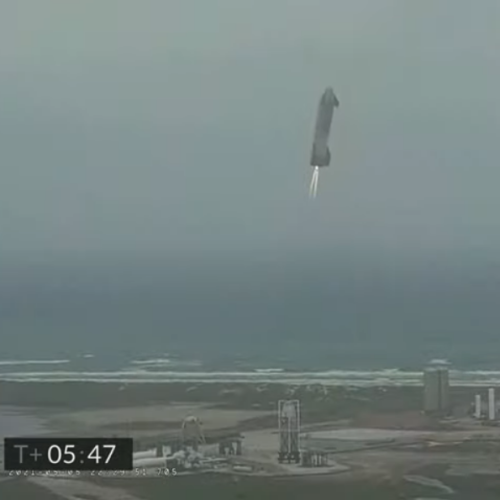SpaceX to refly Starship prototype #15 next?
Capitalism in space: SpaceX has rolled Starship prototype #15 to the launchpad in an apparent bid to immediately send it on its second flight, only two weeks after its first successfully 30,000 foot flight.
While SpaceX has yet to actually install Starship SN15 on Mount B, the prototype has been attached to a crane and said installation is imminent – possibly just waiting for winds to die down. As of publishing, SpaceX has removed SN15’s six ‘used’ landing legs but hasn’t replaced them – a necessary step before the Starship can fly again.
…It’s worth noting that even after SpaceX reinstalls Starship SN15 on a launch mount, there’s no guarantee that the prototype will fly again. Before any reflight, SpaceX will almost certainly put the rocket through at least one additional tank proof test and static fire its Raptor engines. Issues or damage that escaped initial post-flight inspections could easily arise during that process and it’s more likely than not that one or more of SN15’s three Raptors will be removed for detailed inspection or replaced outright.
If this prototype does fly next, the next question will be how high and how far. My guess would be that they will fly it to a much higher altitude to further refine the spacecraft’s flight capabilities on return. It makes no sense to simply repeat the last flight. Now is the time to push the design again, even if it means the loss of the prototype.
Capitalism in space: SpaceX has rolled Starship prototype #15 to the launchpad in an apparent bid to immediately send it on its second flight, only two weeks after its first successfully 30,000 foot flight.
While SpaceX has yet to actually install Starship SN15 on Mount B, the prototype has been attached to a crane and said installation is imminent – possibly just waiting for winds to die down. As of publishing, SpaceX has removed SN15’s six ‘used’ landing legs but hasn’t replaced them – a necessary step before the Starship can fly again.
…It’s worth noting that even after SpaceX reinstalls Starship SN15 on a launch mount, there’s no guarantee that the prototype will fly again. Before any reflight, SpaceX will almost certainly put the rocket through at least one additional tank proof test and static fire its Raptor engines. Issues or damage that escaped initial post-flight inspections could easily arise during that process and it’s more likely than not that one or more of SN15’s three Raptors will be removed for detailed inspection or replaced outright.
If this prototype does fly next, the next question will be how high and how far. My guess would be that they will fly it to a much higher altitude to further refine the spacecraft’s flight capabilities on return. It makes no sense to simply repeat the last flight. Now is the time to push the design again, even if it means the loss of the prototype.




